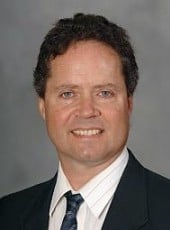In two new papers, civil engineers explore how to make decisions using quantifiable social, economic and environmental guidelines.
It’s called a sustainability-based optimized algorithm. It’s designed to help land managers, city planners, engineers and policymakers make decisions about civil engineering projects. New bridge? Old bridge that needs new repairs? How about the school roof or the waterfront development? Every project has economic, environmental and social factors to consider.
“It’s data-driven decision making – it helps us put a number on different aspects of a project so we can collectively make more informed decisions,” said Brian Barkdoll, professor of at Michigan Technological University. “We can argue about how to put a number to it, but there are ways, and once there’s a number, it can be compared. It’s about transparency in decisions.”
Barkdoll worked with Hossein Tavakoli, PhD candidate in civil and environmental engineering at Michigan Tech, to lay out a sustainability-based optimization algorithm. The algorithm and an algae-based biofuels case study are the focus of their paper published in the .
“What it comes down to is that we need to care,” Barkdoll said, adding that in a second paper – published in River Research and Applications – his team dived deep into a particular example where decision making is tough: sea level rise. “We know coastal cities are in danger of flooding, and it is also surprising how it affects rivers and bridges upstream.”
From energy to water to food, civil engineering projects greatly impact natural resources. Barkdoll hopes that engineers can step up to the challenge to help make decisions clearer, if not easier: “Engineers and researchers get information and make suggestions. We don’t make the decisions but if we can present ideas that help decisionmakers make better decisions, then we should do that.”
About the Researcher






